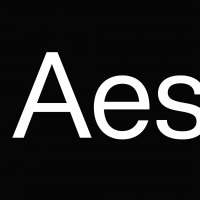Why does the horizontal stroke of the oldstyle 4 sit slightly above the baseline?

Kosal Sen
Posts: 18
In many typefaces with old style numerals, the horizontal of the 4 is not on baseline, but just a tad above . Is there any historical reason for this?
2
Comments
-
I think the /4 is not supposed to rest on the baseline like the /2, but float on its keel like a hovering fantasy ship. No a priori reason why that should be so, I guess... the /4 has always struck me as by far the most non-Latin shape among the numerals, and among the most non-Latin shapes in Latin typography overall.
1 -
Essentially, is is about respecting the proportions of the numeral. Whenever you have a triangular shape, you have a strong dependency between height and width, which in the case of the 4 means allowing the horizontal to float in order to maintain the counter shape at an appropriate width relative to the height.3
-
Kosal, could you show –or at least list– some examples?
0 -
Yeah it's a funny thing when it comes very close to baseline, but not quite, the impulse is to make it rest. I don't imagine it was ever intended to align in that way. This doesn't necessarily happen across all weights within a family either, so you'd have to force the issue, and then what would be the point?0
-
I think PostScript, with its attention to hinting, especially alignment zones, has given an importance to the baseline, and created a semantic groove that present day type designers can easily fall into, imagining that things are supposed to be aligned.
Historically, the baseline was not quite so important (notwithstanding overshoot), except for aligning different fonts with one another. And when one considers that oldstyle figures are, by recognition and subsequently definition, ranging—all over the place—then the question might be rephrased: Is there any contemporary reason for sitting the crossbar of the 4 on the baseline?5 -
Since aligning the onum 4 to the baseline would make it stand out too strong from the rest, it makes sense to float it above.2
Categories
- All Categories
- 46 Introductions
- 3.9K Typeface Design
- 487 Type Design Critiques
- 565 Type Design Software
- 1.1K Type Design Technique & Theory
- 656 Type Business
- 861 Font Technology
- 29 Punchcutting
- 521 Typography
- 119 Type Education
- 325 Type History
- 77 Type Resources
- 112 Lettering and Calligraphy
- 33 Lettering Critiques
- 79 Lettering Technique & Theory
- 559 Announcements
- 94 Events
- 114 Job Postings
- 170 Type Releases
- 180 Miscellaneous News
- 276 About TypeDrawers
- 54 TypeDrawers Announcements
- 120 Suggestions and Bug Reports





